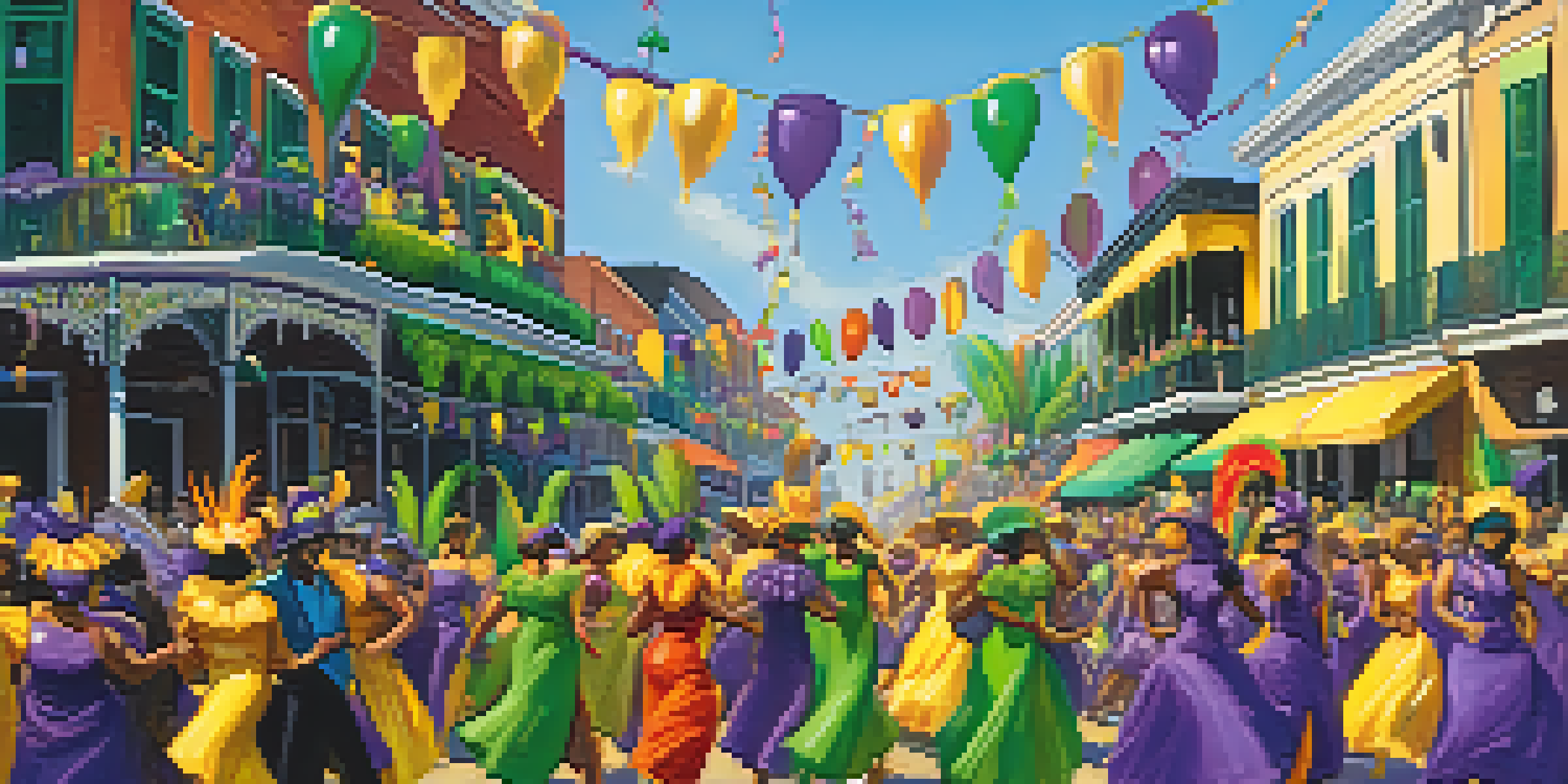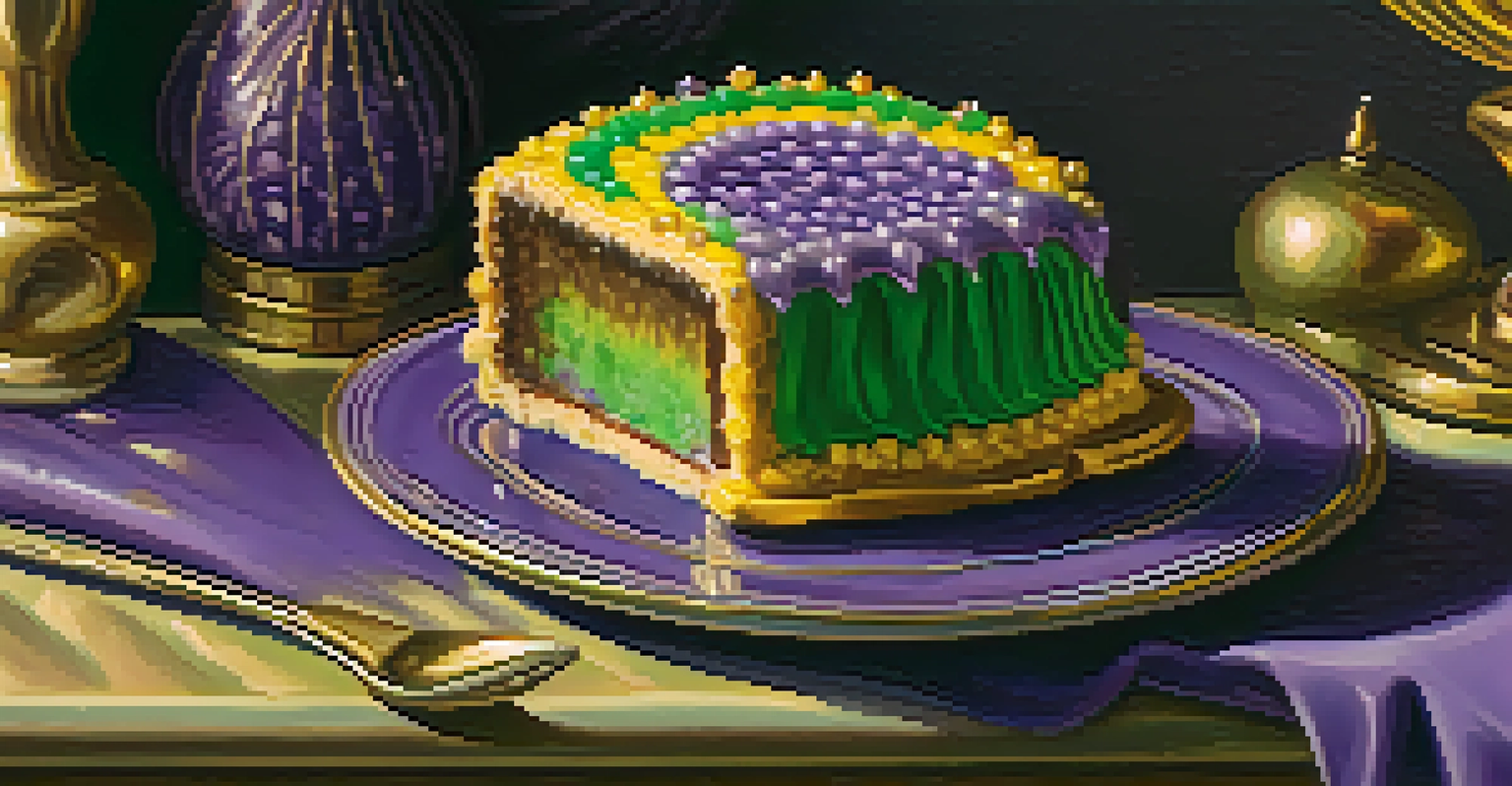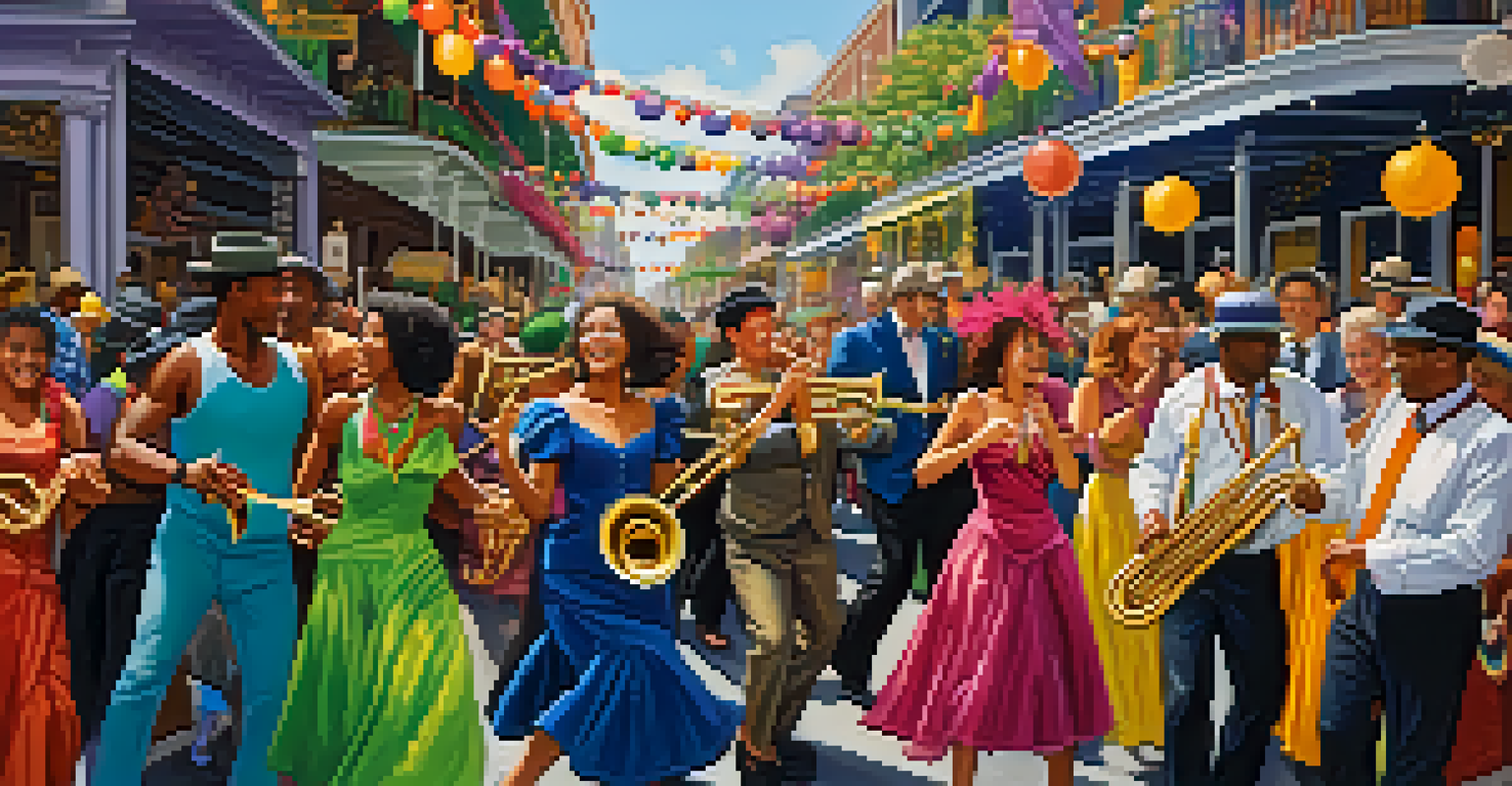Exploring the Cultural Significance of Louisiana's Mardi Gras

The Origins of Mardi Gras: A Historical Overview
Mardi Gras, or 'Fat Tuesday,' has roots that trace back to ancient times, particularly to European pagan festivals celebrating the arrival of spring. In Louisiana, this tradition was embraced and transformed by French settlers. The celebration became a unique blend of cultural influences, including Spanish, African, and Creole elements, making it a distinct event in American culture.
Mardi Gras is a celebration of life, a celebration of hope, a celebration of the spirit of the people.
As the years went by, Mardi Gras evolved, particularly in New Orleans, where it became synonymous with grand parades and vibrant masquerade balls. The first recorded Mardi Gras celebration in New Orleans dates back to 1837, marking the beginning of a tradition that would grow exponentially. Over time, the event became a focal point for community gathering, festivity, and cultural expression.
Today, Mardi Gras not only represents a festive celebration but also serves as a reminder of the rich, diverse history that shaped Louisiana. The blend of traditions is a testament to the state’s history, showing how different cultures can come together to create something truly unique and beautiful.
The Role of Krewes in Mardi Gras Celebrations
At the heart of Mardi Gras festivities are the krewes, social organizations that play a critical role in organizing parades and events. Each krewe has its own unique identity, often represented by a theme or a special symbol. They are responsible for creating elaborate floats and throwing trinkets, known as 'throws,' to parade-goers, adding to the excitement and splendor of the celebrations.

Being part of a krewe is not just about the parades; it fosters a sense of community and camaraderie among members. Many krewes host balls and parties throughout the year, strengthening bonds and building friendships that last beyond the carnival season. This sense of belonging contributes significantly to the cultural fabric of Mardi Gras, making it a cherished tradition for many.
Mardi Gras Celebrates Cultural Diversity
Mardi Gras is a vibrant celebration that blends various cultural influences, showcasing Louisiana's rich heritage.
The krewes are vital in preserving the stories and traditions of Mardi Gras, often passing down their legacies through generations. Each year, they invite new participants to join in the fun, ensuring that the spirit of Mardi Gras remains alive and vibrant.
The Colorful Symbolism of Mardi Gras: Purple, Green, and Gold
The vibrant colors of Mardi Gras—purple, green, and gold—are not just for show; they hold deep symbolic meanings. Purple represents justice, green symbolizes faith, and gold stands for power. These colors were chosen in 1872 to honor the visiting Russian Grand Duke, and they have since become the official colors of the celebration.
The best part of Mardi Gras is that it brings people together, no matter their background or beliefs.
These colors can be seen everywhere during the festivities, from decorations and costumes to the beads thrown during parades. Each color adds to the festive atmosphere, creating a visual spectacle that reflects the joy and liveliness of the occasion. The importance of these colors is a reminder that Mardi Gras is not only a time for fun but also for celebrating values that resonate with the community.
As participants don their masks and costumes in these colors, they embody the spirit of Mardi Gras, transforming into playful and vibrant characters. This colorful display serves as a joyful expression of identity, culture, and unity among those who celebrate.
Culinary Delights: Food Traditions During Mardi Gras
Food is a central part of Mardi Gras celebrations, with unique culinary traditions that highlight Louisiana's diverse culture. One of the most iconic dishes is the king cake, a sweet pastry decorated in the traditional Mardi Gras colors. Often, a small figurine is hidden inside, and the person who finds it is crowned 'king' for the day, adding a playful twist to the festivities.
Apart from the king cake, traditional dishes like jambalaya, gumbo, and beignets also take center stage, showcasing the rich flavors of Creole and Cajun cuisines. These dishes not only satisfy the palate but also tell the story of Louisiana’s multicultural heritage. Sharing food during Mardi Gras is a way for families and friends to come together and celebrate their roots.
Krewes Foster Community Spirit
Krewes play a vital role in Mardi Gras by organizing events and fostering a sense of belonging among participants.
The culinary aspect of Mardi Gras extends beyond just eating; it's a ritual that brings people together. Food trucks and stalls line the streets during parades, offering a feast of flavors that reflect the spirit of the celebration. It's a delicious reminder that Mardi Gras is as much about community and connection as it is about revelry.
The Significance of Music and Dance in Mardi Gras
Music and dance are the lifeblood of Mardi Gras, infusing the celebrations with energy and joy. Traditional jazz, zydeco, and brass band music fill the streets, inviting everyone to join in the festivities. This rich musical heritage reflects Louisiana's diverse cultural influences and is essential for setting the celebratory tone during the season.
During the parades, you'll often see dancers and performers showcasing their talents, adding to the vibrant atmosphere. Many participants wear costumes adorned with feathers and sequins, creating a visual feast that compliments the lively sounds of the music. The rhythms of Mardi Gras encourage spontaneity and joy, inviting everyone to let loose and celebrate.
Music and dance not only entertain but also serve as a powerful means of cultural expression. They tell stories of the community's heritage, bringing together people of all backgrounds to celebrate unity and joy. This celebration of art is a vital part of what makes Mardi Gras a unique and cherished experience.
Mardi Gras: A Celebration of Community and Identity
At its core, Mardi Gras is a celebration of community and identity, bringing together people from all walks of life. It serves as a platform for individuals to express their cultural heritage and pride through various artistic forms. The sense of togetherness during this time fosters a spirit of inclusivity, making it a truly special occasion.
Participating in Mardi Gras allows individuals to connect with their roots while also embracing the diverse cultures that converge in Louisiana. This melding of traditions creates a vibrant tapestry of experiences and memories, reinforcing the idea that Mardi Gras is not just an event, but a way of life for many.
Mardi Gras Evolves with Modern Times
The festival adapts to modern influences, embracing sustainability and technology while preserving its traditional roots.
The community aspect extends beyond the festivities; it encourages acts of generosity and kindness, as people come together to help one another. Whether it's through volunteering or simply sharing a meal, Mardi Gras embodies the spirit of giving and togetherness that defines Louisiana culture.
The Future of Mardi Gras: Adapting Traditions
As with any cultural celebration, Mardi Gras is continually evolving while still honoring its rich traditions. In recent years, there has been a growing awareness of sustainability, prompting krewes and organizers to adopt eco-friendly practices. This shift not only helps protect the environment but also ensures that future generations can enjoy the festivities.
Additionally, the incorporation of new technologies and social media has transformed how Mardi Gras is celebrated and shared. From live streaming parades to sharing experiences online, the festival's reach has expanded far beyond Louisiana, inviting people from all over the world to join in the fun. This digital embrace is a testament to the adaptability of traditions in a modern world.

Looking forward, the spirit of Mardi Gras will continue to thrive as communities find innovative ways to celebrate while preserving their heritage. The essence of Mardi Gras—joy, unity, and cultural pride—will endure, ensuring that this beloved tradition remains a vital part of Louisiana’s identity for years to come.